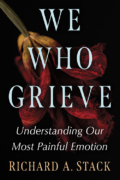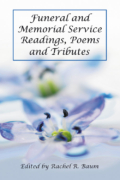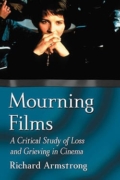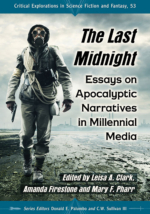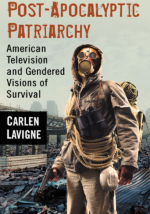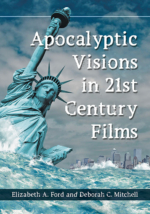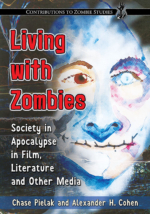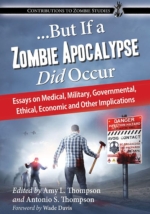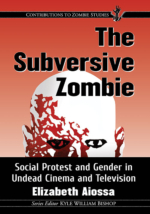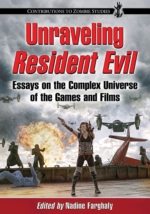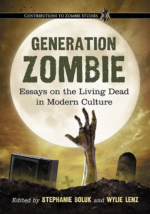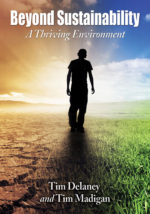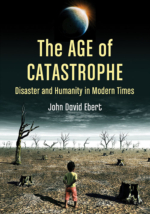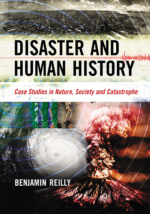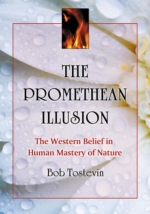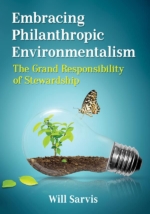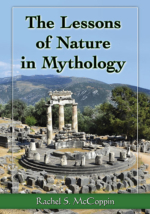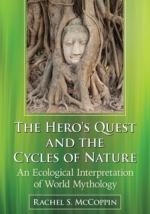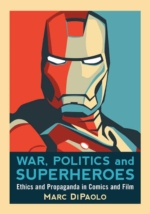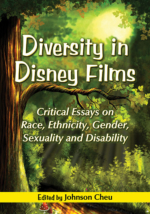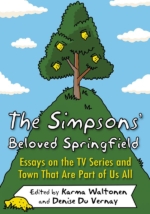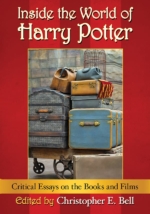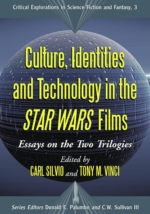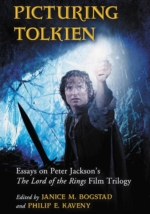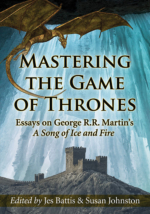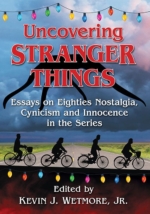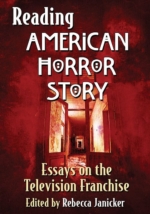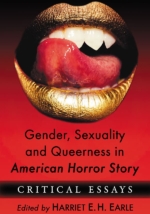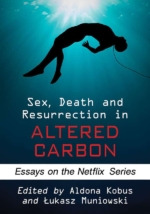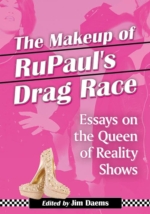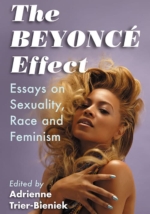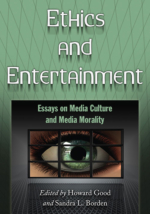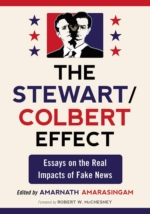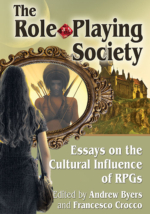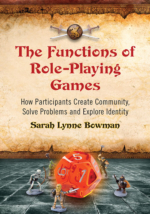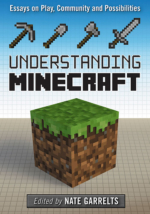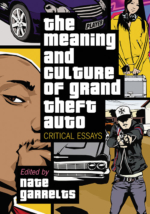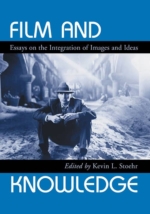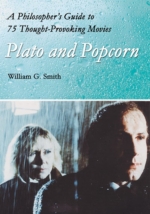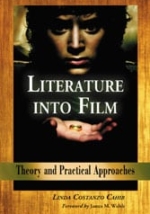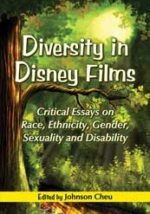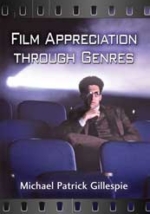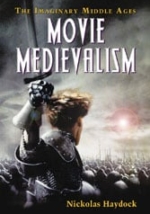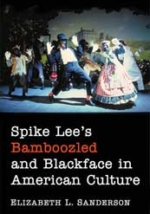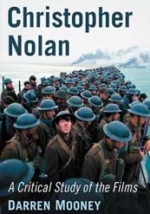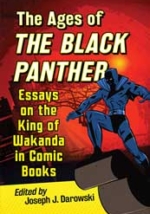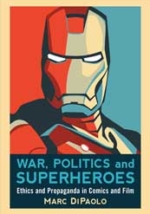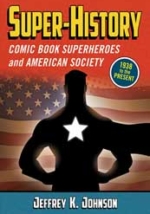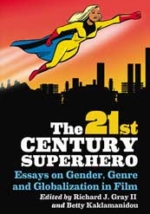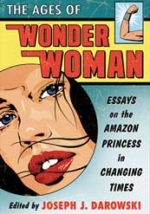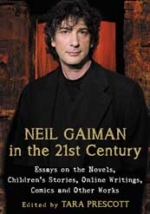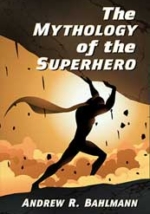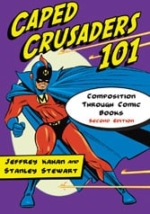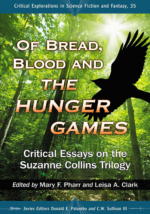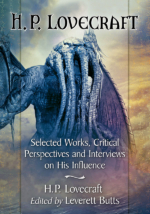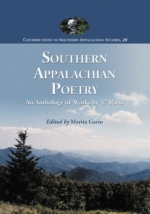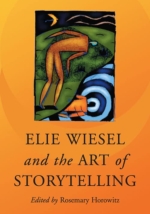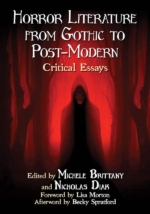We get it: someone in your household wants to bring in a tree while another hasn’t put away the Halloween decorations yet. We suggest using this liminal time to get started with your holiday shopping (and reading). Many of our readers look forward to our traditional post–Thanksgiving holiday sale to fill their shelves, nightstands and gift bags. This year, instead of waiting around for Black Friday, we’re opening up early access to you, our loyal readers and followers, as a way of saying “thank you!” for celebrating with us all year round. From now through Cyber Monday, November 28, get a Santa–sized 40% off ALL titles with coupon code HOLIDAY22! Don’t delay, because when early access ends, the discount will drop to the standard 25%. Happy reading!
Category: Science & Technology
Fall 2021 New Books Catalog Available Now
 Our Fall 2021 new books catalog is now available—click to see what our authors have in store for the coming months!
Our Fall 2021 new books catalog is now available—click to see what our authors have in store for the coming months!
Women’s Studies Sale and New Catalog
 Women made 2020 a banner year for diversity and inclusivity. In sports, representation on and off the field erupted with the leadership of Kim Ng, Sarah Fuller and Katie Sowers. Scientists Emmanuelle Charpentier and Jennifer A. Doudna jointly earned the Nobel Prize in Chemistry. And in politics, women like Cori Bush, Sarah McBride, Yvette Herrell and others were elected to ever-diversifying legislatures, while Kamala Harris ascended to the highest elected position a woman has yet to hold. To honor Women’s History Month and to nurture the path forward, we’re offering 20% off our catalog through March 31st with coupon code WOMEN20.
Women made 2020 a banner year for diversity and inclusivity. In sports, representation on and off the field erupted with the leadership of Kim Ng, Sarah Fuller and Katie Sowers. Scientists Emmanuelle Charpentier and Jennifer A. Doudna jointly earned the Nobel Prize in Chemistry. And in politics, women like Cori Bush, Sarah McBride, Yvette Herrell and others were elected to ever-diversifying legislatures, while Kamala Harris ascended to the highest elected position a woman has yet to hold. To honor Women’s History Month and to nurture the path forward, we’re offering 20% off our catalog through March 31st with coupon code WOMEN20.
Fall 2020 New Titles Catalog Available Now
 Our fall New Titles catalog is now available, featuring 184 forthcoming books from our authors. Browse now!
Our fall New Titles catalog is now available, featuring 184 forthcoming books from our authors. Browse now!
New to Kindle, March 2020
The following titles are now available on Kindle:
|
A Century in Uniform: Military Women in American Films
|
|
African American Entertainers in Australia and New Zealand: A History, 1788–1941
|
|
Apocalypse TV: Essays on Society and Self at the End of the World
|
|
Apocalyptic Ecology in the Graphic Novel: Life and the Environment After Societal Collapse
|
|
Autogenic Training: A Mind-Body Approach to the Treatment of Chronic Pain Syndrome and Stress-Related Disorders, 3d ed.
|
|
Baseball in Europe: A Country by Country History, 2d ed.
|
|
Chasing the Bounty: The Voyages of the Pandora and Matavy
|
|
Colonels in Blue—Missouri and the Western States and Territories: A Civil War Biographical Dictionary
|
|
Electric Trucks: A History of Delivery Vehicles, Semis, Forklifts and Others
|
|
Ethics After Poststructuralism: A Critical Reader
|
|
Film History Through Trade Journal Art, 1916–1920
|
|
Final Battles of Patton’s Vanguard: The United States Army Fourth Armored Division, 1945–1946
|
|
George “Mooney” Gibson: Canadian Catcher for the Deadball Era Pirates
|
|
Girl of Steel: Essays on Television’s Supergirl and Fourth-Wave Feminism
|
|
Hollywood’s Hard-Luck Ladies: 23 Actresses Who Suffered Early Deaths, Accidents, Missteps, Illnesses and Tragedies
|
|
Italian Crime Fiction in the Era of the Anti-Mafia Movement
|
|
Japan’s Spy at Pearl Harbor: Memoir of an Imperial Navy Secret Agent
|
|
Joe Quigley, Alaska Pioneer: Beyond the Gold Rush
|
|
John Derek: Actor, Director, Photographer
|
|
Kenny Riley and Black Union Labor Power in the Port of Charleston
|
|
Managing Organizational Conflict
|
|
Nick McLean Behind the Camera: The Life and Works of a Hollywood Cinematographer
|
|
Parenting Through Pop Culture: Essays on Navigating Media with Children
|
|
Philip K. Dick: Essays of the Here and Now
|
|
Quaker Carpetbagger: J. Williams Thorne, Underground Railroad Host Turned North Carolina Politician
|
|
Rhode Island’s Civil War Dead: A Complete Roster
|
|
Rosalie Gardiner Jones and the Long March for Women’s Rights
|
|
Rosenblatt Stadium: Essays and Memories of Omaha’s Historic Ballpark, 1948–2012
|
|
Sacred and Mythological Animals: A Worldwide Taxonomy
|
|
Sailing Under John Paul Jones: The Memoir of Continental Navy Midshipman Nathaniel Fanning, 1778–1783
|
|
Section 27 and Freedman’s Village in Arlington National Cemetery: The African American History of America’s Most Hallowed Ground
|
|
Sicily on Screen: Essays on the Representation of the Island and Its Culture
|
|
Springsteen as Soundtrack: The Sound of the Boss in Film and Television
|
|
Taking Fire!: Memoir of an Aerial Scout in Vietnam
|
|
The 6th Michigan Volunteer Infantry in the Civil War: A History and Roster
|
|
The Civil War in the South Carolina Lowcountry: How a Confederate Artillery Battery and a Black Union Regiment Defined the War
|
|
The General Aviation Industry in America: A History, 2d ed.
|
|
The Man Who Made Babe Ruth: Brother Matthias of St. Mary’s School
|
|
The Showgirl Costume: An Illustrated History
|
|
The USS Swordfish: The World War II Patrols of the First American Submarine to Sink a Japanese Ship
|
|
The Women of City Point, Virginia, 1864–1865: Stories of Life and Work in the Union Occupation Headquarters
|
|
Themes in Latin American Cinema: A Critical Survey, 2d ed.
|
|
Understanding Nazi Ideology: The Genesis and Impact of a Political Faith
|
|
Virtual Tribe: Indigenous Identity in Social Media
|
|
Why the Axis Lost: An Analysis of Strategic Errors
|
American Philosophical Association 2020 Eastern Division
 McFarland is exhibiting at the 2020 Eastern Division conference of the American Philosophical Association January 8-11 in Philadelphia, Pennsylvania. You are invited to meet with assistant editor Dré Person. Schedule an appointment by emailing us in advance (dperson@mcfarlandpub.com) or stop by the McFarland booth in the exhibit room for a casual conversation with Dré.
McFarland is exhibiting at the 2020 Eastern Division conference of the American Philosophical Association January 8-11 in Philadelphia, Pennsylvania. You are invited to meet with assistant editor Dré Person. Schedule an appointment by emailing us in advance (dperson@mcfarlandpub.com) or stop by the McFarland booth in the exhibit room for a casual conversation with Dré.
Instructors are welcome to examine books for potential adoption, whether at the McFarland booth at APA or electronically, by submitting a request via our web form.
The Apocalypse, Ethics and Philosophy
Sustainability, Ethics and Philosophy
Pop Culture and Philosophy
CONFERENCES: Upcoming MLA and PCA events
McFarland is exhibiting at a number of regional and national conferences in the coming months, and conferees are encouraged to take the opportunity to peruse our books and meet an editor. Schedule an appointment by emailing us in advance (Layla Milholen, Gary Mitchem, or Dré Person), or stop by the McFarland booth in the exhibit room for a casual conversation with an editor.
Popular Culture Association in the South Sept 26-28, Wilmington, NC, Layla Milholen
Association for the Study of African American Life and History Oct 3-5, Charleston, SC, Dré Person
Midwest Popular Culture Association Oct 10-13 Cincinnati, OH, Layla Milholen
American Folklore Society Oct 16-19, Baltimore, MD, Gary Mitchem
South Central Modern Language Association Oct 24-26, Little Rock, AR, Gary Mitchem
Mid-Atlantic Popular Culture Association Nov 7-9, 2019, Pittsburgh, PA, Gary Mitchem
Film and History Nov 13-17, Madison, WI, Dré Person
National Women’s Studies Association Nov 14-17, San Francisco, CA, Layla Milholen
South Atlantic Modern Language Association Nov 15–17, Atlanta, GA, Gary Mitchem
American Philosophical Association Jan 8-11, Philadelphia, PA, Dré Person
Modern Language Association Jan 9-12, Seattle, WA, Gary Mitchem
Cinema & Media Studies
Comics & Graphic Narratives
Literature
Fall 2019 New Books Catalog Available Now
 Our Fall 2019 new books catalog is now available—browse our authors’ new and forthcoming titles today!
Our Fall 2019 new books catalog is now available—browse our authors’ new and forthcoming titles today!
McFarland 40th Anniversary Sale
 We’re turning 40, and we’re celebrating with a special fortieth anniversary sale! Through June 30, get a 25% discount on ALL books when you use the code ANN2019. And if you’ll be in our area (Ashe County, North Carolina, in the beautiful Blue Ridge Mountains), we’d love to see you at our open house event on Friday, June 14. Thank you for supporting our first 40 years—we look forward to celebrating many more birthdays with you.
We’re turning 40, and we’re celebrating with a special fortieth anniversary sale! Through June 30, get a 25% discount on ALL books when you use the code ANN2019. And if you’ll be in our area (Ashe County, North Carolina, in the beautiful Blue Ridge Mountains), we’d love to see you at our open house event on Friday, June 14. Thank you for supporting our first 40 years—we look forward to celebrating many more birthdays with you.
McFarland Turns 40

On June 14, 2019, McFarland will celebrate its fortieth anniversary with an open house party. From noon to five, our campus at 960 Hwy 88 W, Jefferson, NC will be open to the public with finger food, conversation and tours available, and many of our authors will be in attendance. To stay up-t0-date with event information, follow our event page. Below is a brief company history, with personal thoughts, by founder and editor-in-chief Robert Franklin.
McFarland Publishers Now Forty Years Old
by Robert Franklin
McFarland’s history (founder, Robbie Franklin, me): My close friends Biff and Alicia Stickel were burned out special ed teachers in Connecticut, early 70’s. What to do? Back to the land! They (and their little daughter Maranatha Shone Stickel) drove south till they loved the vibe and the scenery and wound up living on Peak Road from 1972 through part of 1978 (and birthing Micah Stickel). Alicia played piano at the local Baptist church and they were cofounders of the Creston Co-op. I visited them in ’72 (instantly fell for the land and people, the forefinger car salute, the almost drinkable river) and again every year after, and when wife Cheryl Roberts came into my life in 1975, we visited. Soon I was bragging about Ashe County to everybody – “If your car breaks down, the very next person to come along will stop and ask if you need help.” I hope a few readers can recognize the Stickels’ name (he goes by Richard now; they live in Toronto). They are the reason McFarland was begun in Ashe County. We present band of publishers, about fifty in number, owe them great honor.
I did not learn till after we moved here in 1979 that my Revolutionary War ancestor Lieutenant Robert McFarland, after whupping the king at Kings Mountain, lived up here in the 1790s. He then went overmountain to become the first ever sheriff of Greene/Washington County, Tennessee. (I was born in Memphis.)
McFarland & Company, Inc., Publishers is our official name. Founded in April 1979 right here. I had been the executive editor of a smallish scholarly publisher in New Jersey; my mentor/boss/friend Eric Moon (a charismatic Brit) knew before I did it was time for me to go off on “my own” (very misleading words!). The local Ashe County newspaper was failing by 1978 and at first I thought, o.k., I’m an editor type, maybe I can start up a new one. Between summer and Christmas the local fellow David Desautels decided the same thing and very successfully started The Jefferson Times. We became friends and McFarland’s earliest two or three books (including a biography of Soviet leader Brezhnev) were typeset using off-hours time on that new newspaper’s equipment. Katy Zell Taylor was our first fulltime employee (Ashe Central H.S. yearbook editor!) and did a lot of typesetting and correcting. Dental Care in Society was our first published book, in 1980 (ask me some day).
After deciding up in New Jersey to stay with book (versus newspaper) publishing, I phoned the Jefferson Post Office in February 1979 to set up a box number mailing address – they said people had to apply in person. Whew! So I flew from Newark to Tri-Cities, Tennessee (what did I know?), rented a car, drove to Jefferson (hours!), filled out a form, got back in the car, drove back to Tri-Cities, and got back home not long before day was done.
A couple of months later, on April 1, 1979, Cheryl and I packed our former life stuff (including hundreds of books—heavy!) in a small U-Haul, attached it to our VW bug, and began to drive south, the Stickels’ Ashe County on our minds.
My ninth-grade homeroom friend (Toledo, Ohio), Mike Strand, had helped with some financial and emotional support and we stopped at his place in Maryland overnight. Armed with an Ashe return address, I had written several hundred letters (yes!) on a yellow pad on my knees in the front seat while Cheryl drove, and Mike arranged for a nearby university used-to-weird-hours thesis typist to type them all overnight; we mailed them April 2 and drove on. We were headed to my parents’ (retired librarians) house in Charlottesville, with me again writing several hundred short letters on my lap. We had arranged for a similar heroic overnight typing fest (the two days: 905 letters to all the authors I had addresses for, saying my former employer will take good care of you, they’re wonderful publishers—But if by any chance they turn you down for something, give us a shot!).
The U-Haul was too much for the Bug and our left rear wheel came OFF 20 miles north of Charlottesville—but stayed in the wheel well (having nowhere else to go), behaving violently. Definitely exciting (it was my stint at the wheel). We lost two or three days; I split logs for my parents’ fireplace.
In Ashe County finally, we scooped up some reply mail from authors. Already! And we soon secured a sweet farmhouse in Dillard Holler (landlord Jesse Dillard; Mom-figure Clyde Dillard; horse-plus-himself quarter-acre-garden plower Jones Dillard). The Dillard families taught us a great deal about what being “conservative” actually means. (One day Jesse turned up with several hundred fence rails he stored near “our” (his) house; no immediate need, but “I got ’em for 25¢ each.” They stayed stacked for years…) The birth of our sons Charles (in ’81), Nicholas (’85) and William (’89) certainly emphasized the Dillards’ lessons. (Jesse routinely tossed hay bales up into pickup trucks in his 80’s. Lemme be him!)
McFarland itself started out next to the H & R Block office, near the florist, in Jefferson, a small space but enough for our first couple of years. The Jefferson Post Office turned out, under our loyal friend Charles Caudill, to be one of our greatest early assets. He was so supportive as McF struggled through ignorance of mass mailings, foreign registered packages (we learned together!), “library rate” book mailings, etc. McFarland moved in 1981 or ’82 to the Mountain View shopping center between the towns and quickly expanded there. In 1982 we lucked out by having Rhonda Herman agree to join the tiny staff, doing all the “business” stuff while I coddled authors, edited manuscripts and coached the typesetters. High school senior Cynthia Campbell became a stalwart and sixteen year old Cherie Scott was a wow of a typesetter, along with Katy Taylor, on our new typesetting equipment. Within three years we were producing 40 or so new books a year (in 2018 the total was nearly 400).
Meanwhile, the people of Ashe County all around us showed interest, great surprise (“A Publisher in Ashe County?” read one huge Jefferson Times headline), and affection. Highly significant was Hal Colvard, repeatedly trusting us, at Northwestern bank, another wonderful early friend of McFar. We warmly greeted each other on Saturday mornings at the post office for many years after he retired.
By 1984 we’d moved to our present location, which became five buildings on both sides of the road. We’re technically inside Jefferson town limits. We took Mackey McDonald’s trim brick ranch house, whacked walls left and right, pushed out here, there… Years later we added a second floor – my joke is, the main building now has more roof lines than an Italian hill village.
We are, or were, a library-oriented scholarly and reference book publisher. (We’ve grown much more into a straight-to-people operation today but libraries are still a critical component of our efforts.) Two of our earliest works were Library Display Ideas by my sister Linda Franklin and Free Magazines for Libraries, by Adeline Mercer Smith: they were terrific sales successes. Another 1982 biggie was Anabolic Steroids and the Athlete by William M. Taylor, M.D. We hit that topic just as it exploded nationwide. One of the most memorable early works was Keep Watching the Skies! by Bill Warren (1982). This huge book expertly, humorously covers in amazing depth every American science fiction movie of the 1950s and a lot of Hollywood Big Names spoke highly of it in print. We were famous! (Well, the author was…)
McFarland was an early strong supporter of the local arts scene. (There are hundreds of paintings hanging in four of our buildings.) Cheryl Roberts and I founded the publication ARTS/DATES for the Arts Council in 1980 or 1981, and for more than a decade paid all its expenses as it grew grander and ever more useful. Loyal Jane Lonon (Arts Council head) wangled twice for us an N.C. Governor’s Business Award for the Arts and Humanities (go to Raleigh; shake hands; pose for photos; eat dinner).
I joined the strong, active Ashe County Little Theatre and played Dracula for them in 1981, sporting fangs crafted by the late Brett Summey, who became a good friend, now truly missed. Jane Lonon and I wowed the crowd in The King and I and Tom Fowler and I rolled them in the aisles in Greater Tuna. When I played Macbeth, the high school English teacher promised extra credit to student attendees.
McFarland’s output grew rapidly—by the 1990s we were producing hundreds of new titles each year and our staff had doubled, then tripled in size. Margie Turnmire had arrived in the mid–’80s, a beautiful soul and a very smart lady: director of finance and administration. In 1995 the Ashe County Chamber of Commerce honored us with a Business of the Year award (I believe we were the third such) and in 1998 The Wall Street Journal ran a feature article on us, showing that we are a bit unusual in our range of offerings. We have a commanding position in, for example, Vietnam combat memoirs, chess history, baseball (teams, eras, bios), automotive history and popular culture (film, TV, comics, literature…). We’ve done many reference books (though with Wiki-Google etc. now such works are uneconomical to produce); a Library Journal book of the year was local John Stewart’s African States and Rulers in 1989. Lots of Civil War, World War II, American/European/World history, literary criticism. Authors from all over the world. That part’s fun! As I write this we have published 7,800 titles.
We had busted out of our onsite warehouse and used the old Ashe County Jail on Buffalo Road for several years in the 80s! Ultimately we had to move our shipping operation into the building next to the Arts Council owned by Jim Reeves. On its outer wall facing the Arts Center we had Jack Young do the town’s first mural (now painted over): “Ashe County through the Ages.” Finally, Mike Herman built us an entirely new warehouse across the road from our main building in about 1990. Fourteen years later, then-vice-president Rhonda Herman (now president) moved the company onto firmer financial footing by arranging to install state-of-the-art printing equipment in that warehouse (we’d always used out-of-house printing firms).
Cheryl and I love Ashe County. We love the people. We love the trees, the river. (We came in first in the Mixed Expert class canoe race four or five years ago!) I even like the curves driving 23 miles to and fro our home to work (we live practically on the Tennessee line, up in the Flatwoods). The finger salute still works and the tire zing helps me think through business challenges. Our three boys, Charles, Nicky and William, also revere their place of birth. McFarland has about 50 employees, all of whom are exceptionally talented. When I got here to start the company, I truly had my pick of some of the best talent available anywhere, and I mean Anywhere. Our typesetters know every Hungarian or Swedish accent mark there is!
The local merchants have become business partners. Local artists have paintings hanging in our offices. The restaurants are great for business lunches. The weather—sublime (I learned to fell trees and the art of minimizing the lifting and stacking of logs our first year here); I like winter! Mike Herman built our house and the numerous renovations of our current space—impossible to imagine a better job. Stan Barker did some fabulous stone walls at our home. I feel both cozy and exhilarated just getting up in the morning! Ashe County, we’re for you!
McFarland is having an open house (snacks, drinks, tours) starting at noon on Friday, June 14th. We want to show our thanks to a community that has nurtured us for 40 years. Come one, come all!
Three New Titles Reviewed in Choice
![]() Infield Fly Rule Is in Effect: The History and Strategy of Baseball’s Most (In)Famous Rule
Infield Fly Rule Is in Effect: The History and Strategy of Baseball’s Most (In)Famous Rule
“This reviewer coached college baseball, and before reading this small treasure wrote down every conceivable argument for and against IFR. All of them and more are addressed here precisely, with wit, style, and evidence. One can ask for no more than that…highly recommended.”—Choice
The League That Didn’t Exist: A History of the All-American Football Conference, 1946–1949
“Thoroughly indexed…recommended.”—Choice
The Language of Popular Science: Analyzing the Communication of Advanced Ideas to Lay Readers
“Insightful analysis…this is a very readable and interesting book…recommended.”—Choice
Two New Titles Reviewed in Booklist
 Too Funny for Words: A Contrarian History of American Screen Comedy from Silent Slapstick to Screwball
Too Funny for Words: A Contrarian History of American Screen Comedy from Silent Slapstick to Screwball
“Spirited discussion… Kalat’s knowledgeable and conversational style makes the work accessible to all readers not just the cineastes among us. Film fans, students, and researchers will applaud this lively and impassioned look at a turning point in American film history.”—Booklist
Robots That Kill: Deadly Machines and Their Precursors in Myth, Folklore, Literature, Popular Culture and Reality
“With a broad range of examples, this examination of humanity’s artificial counterparts offers plenty to delve into for sf fans and everyone interested in a rich context for AI.”—Booklist
African American Studies Catalog and Sale
Biographies and Memoirs Catalog and Sale
 McFarland’s biographies and memoirs cover the fascinating life stories of both iconic personalities and quiet heroes. On sale now, browse hundreds of titles from history, sports, movies, music, science & technology, literature, military history, transportation and more. When you order direct from our website using the coupon code BIOGRAPHY, print editions of all biographies, autobiographies and memoirs are 20% off now through February 15.
McFarland’s biographies and memoirs cover the fascinating life stories of both iconic personalities and quiet heroes. On sale now, browse hundreds of titles from history, sports, movies, music, science & technology, literature, military history, transportation and more. When you order direct from our website using the coupon code BIOGRAPHY, print editions of all biographies, autobiographies and memoirs are 20% off now through February 15.
Spring 2019 New Books Catalog Now Available
 Our spring 2019 new books catalog is now available—click here to browse our forthcoming titles!
Our spring 2019 new books catalog is now available—click here to browse our forthcoming titles!
Holiday 2018 Sale—Get 25% Off All Books!
 The holidays are a special time at McFarland—in addition to publishing scholarship, many of us also participate in the tree harvest, as Ashe County produces more Christmas trees than any other county in the United States. If you live in the Southeast, you may have a little bit of McFarland in your living room right now! This season, please consider putting some McFarland under the tree for the readers in your life. To make your holiday shopping easier, we’re offering 25% off of ALL books through the end of the year! On our website, use coupon code HOLIDAY18, or call us at 800-253-2187. For inspiration, browse our new catalog of of gift ideas for readers. Happy holidays from your friends at McFarland!
The holidays are a special time at McFarland—in addition to publishing scholarship, many of us also participate in the tree harvest, as Ashe County produces more Christmas trees than any other county in the United States. If you live in the Southeast, you may have a little bit of McFarland in your living room right now! This season, please consider putting some McFarland under the tree for the readers in your life. To make your holiday shopping easier, we’re offering 25% off of ALL books through the end of the year! On our website, use coupon code HOLIDAY18, or call us at 800-253-2187. For inspiration, browse our new catalog of of gift ideas for readers. Happy holidays from your friends at McFarland!
Fall 2018 New Books Catalog Available Now
 Our Fall 2018 catalog is now available—click here to see our authors’ forthcoming books!
Our Fall 2018 catalog is now available—click here to see our authors’ forthcoming books!
Newly Published: Biology Run Amok!
Biology Run Amok!: The Life Science Lessons of Science Fiction Cinema
Mark C. Glassy
Science fiction movie audiences may sometimes wonder how fictitious the science in a film really is. Yet for many—call them the “Jurassic Park generation”—film and popular media can present a seemingly plausible melding of science and fiction that forms a distorted understanding of scientific facts and concepts. Recognizing that film is both the dominant entertainment medium and an effective tool for teaching, this book—featuring articles originally published in the magazine Scary Monsters—separates biological reality from fantasy in dozens of science fiction films, including The Island of Lost Souls (1933), The Incredible Shrinking Man (1957), War of the Worlds (1953), A Clockwork Orange (1971), Scanners (1980), The Serpent and the Rainbow (1987) and Outbreak (1995).
Newly Published: Women in STEM on Television
Women in STEM on Television: Critical Essays
Edited by Ashley Lynn Carlson
Women remain woefully underrepresented in science, technology, engineering and math (STEM). Negative stereotypes about women in these fields are pervasive, rooted in the debunked claim that women have less aptitude than men in science and math. While some TV series present portrayals that challenge this stereotype, others reinforce troubling biases—sometimes even as writers and producers attempt to champion women in STEM.
This collection of new essays examines numerous popular series, from children’s programs to primetime shows, and discusses the ways in which these narratives inform cultural ideas about women in STEM.
New Spring 2018 Catalog Available Now
 Our Spring 2018 New Books catalog is now available—click to see what our authors have in store for the new year!
Our Spring 2018 New Books catalog is now available—click to see what our authors have in store for the new year!

